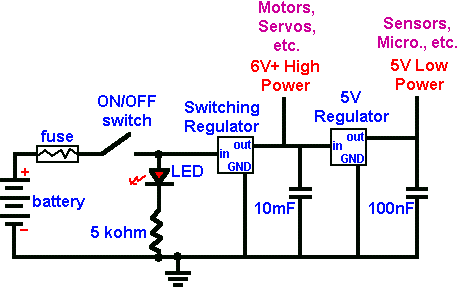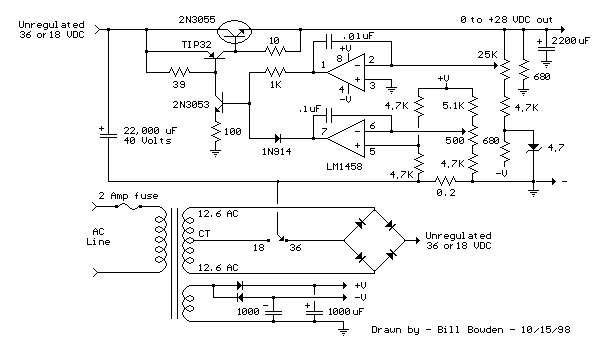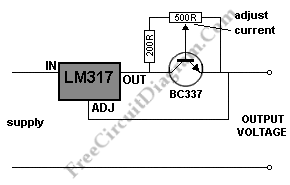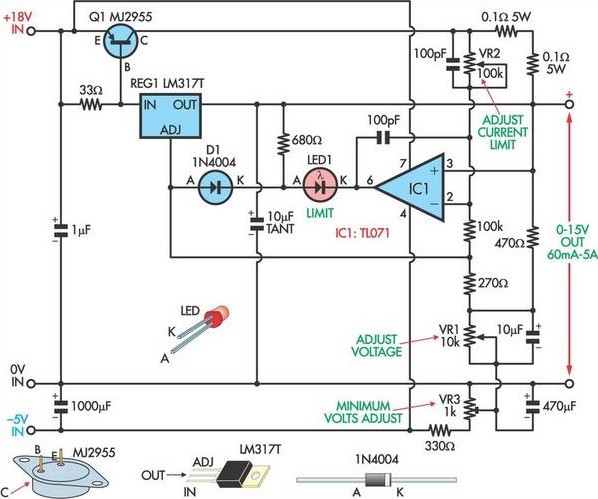
LM317 Linear power supply Regulator selector 1.5V3V4.5V5V6V9V 1.5A
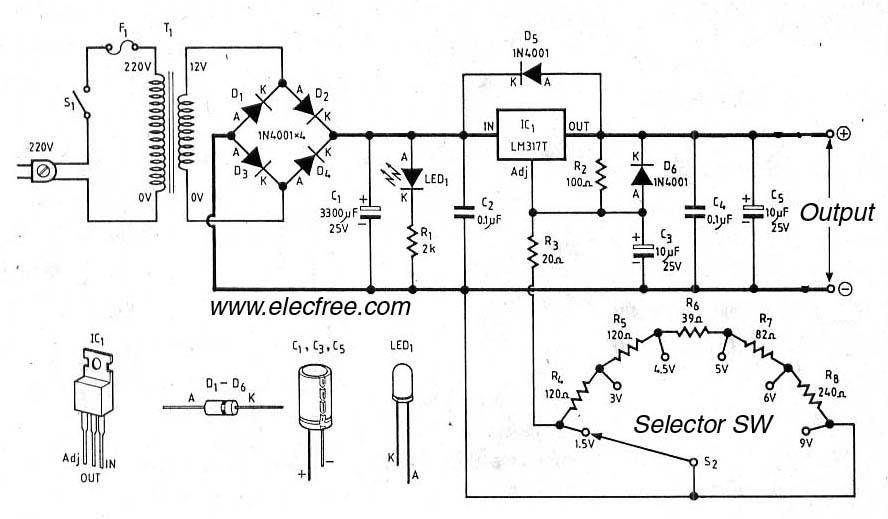
Typically, the study of electronic power supplies starts with batteries, such as 9 volts, 1.5 volts, and 6 volts. However, there are disadvantages associated with this approach.
The exploration of electronic power supplies often begins with the use of batteries, which are common sources of voltage in various applications. Batteries such as 9 volts, 1.5 volts, and 6 volts provide portable and straightforward power solutions for circuits. However, several disadvantages exist when relying solely on batteries for power supply in electronic circuits.
One significant drawback is the limited lifespan of batteries, which can lead to frequent replacements and increased maintenance costs. Additionally, batteries can exhibit voltage drops as they discharge, potentially leading to insufficient power for sensitive electronic components. This inconsistency can affect the performance and reliability of the circuit.
Moreover, batteries typically have a limited current output, which may not be suitable for high-power applications. In scenarios where higher currents are required, alternative power supply methods, such as AC to DC converters or regulated power supplies, may be more appropriate. These alternatives can provide stable voltage and current levels, enhancing the overall efficiency and reliability of electronic systems.
Furthermore, environmental considerations arise with battery usage, as improper disposal can lead to pollution and resource wastage. The development of rechargeable battery systems offers some mitigation; however, they still face issues related to charging cycles and capacity degradation over time.
In summary, while batteries serve as a fundamental starting point for learning about electronic power supplies, their limitations necessitate the exploration of other power supply options that can offer more consistent performance and sustainability in electronic applications.Normally begin to learn about electronics power supply from the battery, for example, 9 volts, 1.5 volts, 6 volts etc. But there are disadvantage that when.. 🔗 External reference
The exploration of electronic power supplies often begins with the use of batteries, which are common sources of voltage in various applications. Batteries such as 9 volts, 1.5 volts, and 6 volts provide portable and straightforward power solutions for circuits. However, several disadvantages exist when relying solely on batteries for power supply in electronic circuits.
One significant drawback is the limited lifespan of batteries, which can lead to frequent replacements and increased maintenance costs. Additionally, batteries can exhibit voltage drops as they discharge, potentially leading to insufficient power for sensitive electronic components. This inconsistency can affect the performance and reliability of the circuit.
Moreover, batteries typically have a limited current output, which may not be suitable for high-power applications. In scenarios where higher currents are required, alternative power supply methods, such as AC to DC converters or regulated power supplies, may be more appropriate. These alternatives can provide stable voltage and current levels, enhancing the overall efficiency and reliability of electronic systems.
Furthermore, environmental considerations arise with battery usage, as improper disposal can lead to pollution and resource wastage. The development of rechargeable battery systems offers some mitigation; however, they still face issues related to charging cycles and capacity degradation over time.
In summary, while batteries serve as a fundamental starting point for learning about electronic power supplies, their limitations necessitate the exploration of other power supply options that can offer more consistent performance and sustainability in electronic applications.Normally begin to learn about electronics power supply from the battery, for example, 9 volts, 1.5 volts, 6 volts etc. But there are disadvantage that when.. 🔗 External reference
